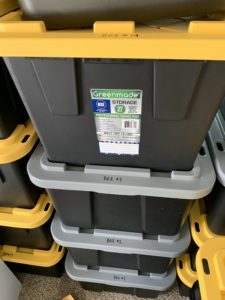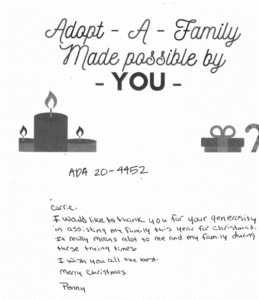Myth: I don’t really need an appraisal.
Facts:
There are many important reasons to establish and maintain an appraisal on your valuable collections:
• Avoiding underinsurance
• Estate Planning
• Tax Planning
• Understanding your assets and how to protect them
• Planning for division of property after or before: a death in the family, divorce, or the dissolution of a family partnership where the collection is an asset
Myth: It’s too expensive.
Facts:
• Request a flat fee for the entire appraisal at the outset rather than an hourly rate; you may or may not achieve this, but it can’t hurt to ask.
• A well-executed appraisal will cost approximately $125 – $350 per hour.
• Depending on the nature of your collection, an appraiser can usually assess five to ten items an hour. Very important works or those with extensive provenance may take longer to appraise.
• Don’t hire an appraiser on a “per item” basis. The cost should be based on the time it will take to review your entire collection as a whole.
• Appraisal fees should never be based on the value of your property. This is a major conflict of interest for the appraiser, and appraisals billed this way are not USPAP compliant (see below) and will not be accepted by the IRS.
• Resist the temptation to hire a less expensive appraiser with fewer years’ experience. Your appraisal document should withstand the rigors of both time and the vagaries of the art market, and it is worth investing in a high quality appraisal from the beginning.
• Some insurance companies and insurance brokers have discounts negotiated for their clients with some appraisal firms. Be sure to ask about a potential discount.
Myth: It takes too much time.
Facts:
• For insurance, not everything needs to be appraised. Review your fine art schedule with your broker to determine a value threshold. For example, you might not want to include items that fall below your deductible.
• Many appraisers will provide a complimentary review of your schedule, identifying the top five or ten items that may require updated values.
• Once you have a comprehensive appraisal on file, future updates become much faster and cost effective, and can often be completed without further inspections.
Myth: I can get an appraisal for free.
Facts:
As they say, there’s no such thing as a free lunch. Someone offering a free appraisal often has an agenda that could influence their appraisal, particularly with an auction house or a dealer. An auction house’s main objective is to gain access to your collection so they can sell it. Their values may not accurately reflect the marketplace, or best represent your appraisal needs as a client; low values might minimize your sales expectations, or high values might tempt you to sell. Sometimes a dealer may provide you with an updated value for a work they have sold to you, but keep in mind that it benefits the dealer for that value to be as high as possible, as it shows you what a wonderful investment they’ve provided while also establishing a higher baseline for their own future sales.
Myth: All I need is a value.
Facts:
• A formal appraisal should contain the following elements:
– Description of items appraised and values
– Purpose of Appraisal – this is very important as the value can vary greatly depending on whether the appraisal is for Insurance, Donation, Estate, Equitable Distribution (Divorce), Inventory, Damage/Loss, etc.
– Type of value being applied, how values were determined (appraiser’s methodology), and discussion of the marketplace
– Inspection date (nothing whether inspected in person or from images), date of appraisal preparation, and effective date of the values
– Appraiser’s biography, resume, and signature
– Fee structure
– The appraiser should also confirm:
o The appraisal is USPAP compliant
o They have no interest in the items appraised or their values
o They have no reason to question the authenticity of the items appraised or the information provided
• Each item on an appraisal should have the following information addressed:
– Full description (including title, artist, dimensions, materials, etc.)
– Provenance
– Exhibition and publication history, if applicable
– Catalogue Raisonné number, if applicable
– Condition of item
– Comparables – this establishes what similar sales were used as a basis for valuation, and may include further analysis of comparables and bearing on value of this item
– Statement of value (this should not be an estimate or a range)
• For IRS appraisals, the following additional information should be included:
– Confirmation that the IRS has not disqualified the appraiser
– Required IRS forms
– Appraiser’s Tax ID number
– Photograph of artwork – see strict IRS criteria for photographs: https://www.irs.gov/pub/irs-utl/art_appraisal_services_photographic_requirements.pdf
• A properly executed formal appraisal should be USPAP compliant – Uniform Standards of Professional Appraisal Practice:
• The amount of information included in a proper appraisal can be rigorous. It is important that the appraisal contain this information in order to “stand the test of time” with regard to insurance values, the IRS, etc. Whether you are basing your insurance off of this value, or submitting it to the IRS, you want it to be as accurate as possible to avoid potential negative consequences of underinsurance or inaccurate tax-related information.
Myth: The IRS will know what I have.
Facts:
• Appraisals are confidential, and appraisers only share their documents with you or parties you designate. Documents are not filed with any authorities or made public.
• The IRS is well-versed in personal property appraisals and understands the difference between an insurance appraisal and a tax appraisal. When the IRS reviews appraisals, it is done by a special fine art advisory panel.
https://www.irs.gov/compliance/appeals/art-appraisal-services
• Before making any assumptions about how an appraisal may affect your tax liabilities, contact your tax attorney for advice.
• Your collection is an asset and should be considered like any other part of your estate. By taking an inventory and establishing values, you can clearly identify the complete contents of your collection for your heirs, properly understand value to set aside estate tax funds, or even minimize the tax burden on your heirs. An appraisal document is a helpful first step in allowing your heirs to prove clear title, should they someday wish to sell inherited works.
• Many of us assume we can simply tell our heirs which artworks they can take after we die. But what happens when they later try to sell this work? How do they prove their ownership? If they go to auction, the auction house will need to establish the heir has title. If the artwork has not passed to your heir through the normal channels, and taxes have not been paid, either as a gift before your death or as part of your estate, the IRS will inevitably find out whenever it comes time to sell. Estate taxes will have to be paid, and usually there will be additional capital gains on the work.
• It is a good idea to have an updated appraisal as you make estate plans. This document will give you an objective understanding of your collection’s value and can aid in how you distribute your estate. Having a clear plan in place, an appraisal on file, and a complete inventory of items will help avoid potential administrative fees from attorneys and trustees as the estate is settled.
**You should always consult with your tax attorney and accountant when making tax decisions. **
Fact: Who do I call for an appraisal?
• The appraiser should be Senior Accredited Appraiser affiliated with one of the recognized industry associations (such as the Appraisers Association of America, American Society of Appraisers, or International Society of Appraisers) and should be USPAP Certified.
• Appraisers Association of America – Organization with professional requirements in order to be a member – Search by location/type of item to find a local independent appraiser http://www.appraisersassociation.org/
• American Society of Appraisers – Organization with professional requirements in order to be a member – Search by location/type of item to find a local independent appraiser http://www.appraisers.org/
• International Society of Appraisers – Organization with professional requirements in order to be a member – Search by location/type of item to find a local independent appraiser
www.isa-appraisers.org
• Winston Art Group – Appraisal Firm with many experts (artwork, jewelry, coins, memorabilia, etc.) http://winstonartgroup.com/
• Pall Mall Art Advisors – Appraisal Firm with many experts (artwork, jewelry, coins, memorabilia, etc.) http://www.pallmallartadvisors.com/
• Gurr Johns – Appraisal Firm with many experts (artwork, jewelry, coins, memorabilia, etc.) New York
https://gurrjohns.com/
• Fine Art Appraisers – Appraisal Firm with many experts (artwork, jewelry, coins, memorabilia, etc.)
http://www.nyfaa.com
• Allyson Lee Art Appraisal Services – Independent Appraiser in Boston
http:/www.aleeappraisals.com/
Fact: How do I know if an appraiser is “certified”?
• Appraisers should be “USPAP Certified” which means that they comply with the requirements of the Uniform Standards of Professional Appraisal Practice. This dictates ethics, report requirements, etc. https://www.appraisalfoundation.org/
• The Uniform Standards of Professional Appraisal Practice (USPAP) is the generally recognized ethical and performance standards for the appraisal profession in the United States. USPAP was adopted by Congress in 1989, and contains standards for all types of appraisal services, including real estate, personal property, business and mass appraisal.
See “Putting an Estate Value on the Assets Unique to You.” The New York Times September 27, 2013 for more information on this subject. https://www.nytimes.com/2013/09/28/your-money/putting-an-estate-value-on-the-assets-unique-to-you.html
The elements of appraisals information were derived from Jane H. Willis, Appraisal Writing Workshop.



